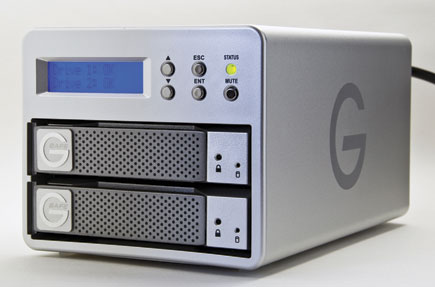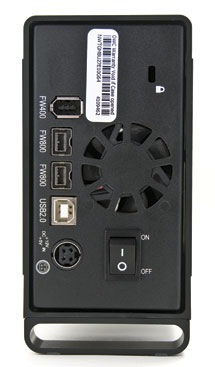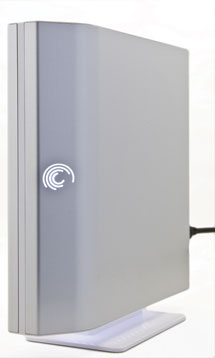External Storage & Backup; Safeguard Your Valuable Image Files
It wasn’t too long ago that I was sitting in front of my computer editing some images on an external hard drive when the unthinkable happened. I thought that transferring my files to an external drive was all that I needed to ensure the safety of my photo library—until that external drive crashed! As I learned later, a few prudent steps in advance would have alleviated much of my problem. It was a hard (disk) lesson learned—one external drive in and of itself is not enough. The key is redundant storage and a rigorous back-up routine. Back-up storage can involve (1) additional external drives; (2) more stalwart redundant drive arrays; (3) backup onto CD, DVD, or Blu-ray disc (preferably archival media); (4) a network drive; or (5) online storage. In this article I’ll discuss the first two groups; depending on the value and volume of your image files, you may want to explore them all.
 |
|
|
External Drives
External drives, as a rule, come preformatted for Mac or Windows out of the box. Reformatting to meet your needs is always an option, if a somewhat circuitous one at times. SATA (or some variant) is today the de facto choice in all popular drives and more than adequate for digital images. Many drives run at specified rotational speeds, popularly 5400 or 7200 RPM—the faster it spins, the faster the throughput. However, the faster the drive spins, the hotter it runs and the more energy it consumes.
Many high-capacity (two or more) drive systems are equipped with a cooling fan. Some newer, so-called “green” drives do away with the fan, thereby conserving energy while running quieter. Or they employ a power-managed fan that operates as needed. A heat sink may replace or augment the fan in an effort to dissipate the high temperatures in an energy-efficient manner.
 |
|
|
 |
It’s A RAID
How many individual drives can any one person have sitting on a desk? It gets to the point where you need to consolidate. Enter the redundant drive solution. RAID, an acronym for Redundant Array of Inexpensive (or Independent) Disks, is a surprisingly simple back-up storage solution in its most basic form. The case holds a minimum of two hard drives which operate in tandem. The drive array is constantly monitored by the on-board processor, or controller.
There are various protocols among RAID drives. While a few drives may come preconfigured one way or the other out of the box, you can always reconfigure the drive to operate as you wish. But remember, this has the same effect as formatting a drive and will erase all data—so make this the first step after hooking the drive up to your computer (or after formatting for a specific operating system).
 |
|
|
A hardware RAID implementation (sometimes via a switch) offers better performance than one driven by software. However, don’t view this feature as a deal breaker: many popularly-priced drives rely on software implementation. No matter how many disks are in a RAID array, they will appear as one drive to your computer. In any RAID system, disk performance is monitored via an on-board display—usually LEDs or possibly an LCD data panel (some of that info may also be available through your computer).
 |
|
|
Typically, a two-disk RAID drive can be configured as RAID 0 (or “striped,” for speed, maximum throughput, and efficiency) or RAID 1 (“mirrored,” for security). These are the simplest protocols. Simply put, photographers should choose RAID 1. Here’s why: if you started with a two-disk RAID array, with 1 terabyte (TB) on each disk, you would end up with a total storage capacity of 1TB on a RAID 1 drive. Why? Because the second disk is mirroring the first—constantly copying and updating data from the first disk. One disk is a backup for the other—and that process is totally transparent to you. Higher RAID protocols call for larger numbers of physical drives and may combine the best of both worlds, for faster throughput and enhanced data protection. RAID 1 is the most economical back-up solution for most of us.
- Log in or register to post comments

































